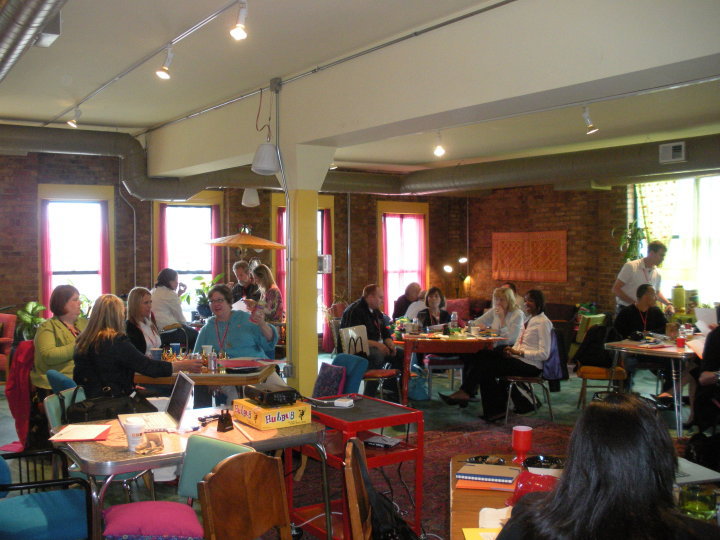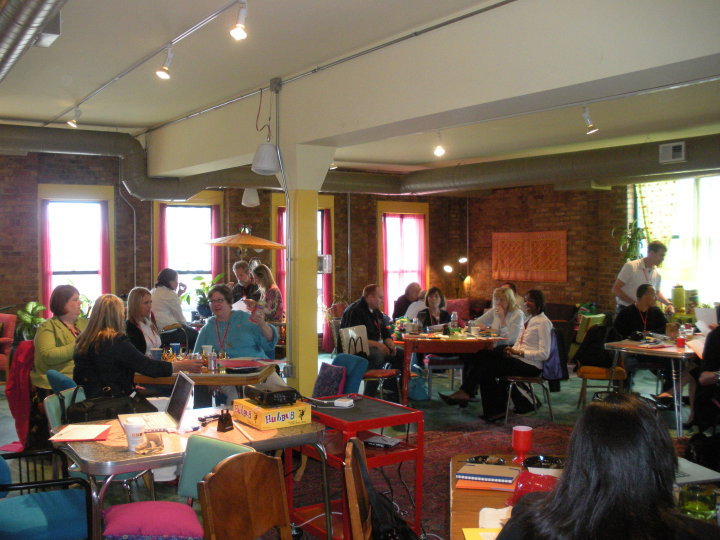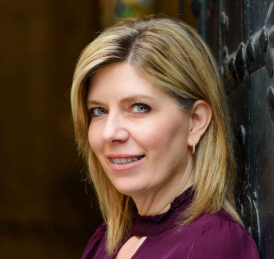Last week I wrote about ways to influence a culture of engagement and the first thing I mentioned was fostering an innovative environment. There have been studies over the years that tout the benefits of cubicles, of open work environments, of agile workplaces, and working from home. And of course, some of the studies share the negative impact of these work configurations.
For example, the Neuro Sculpting! Training Studio reported that Queensland University of Technology’s Institute of Health and Biomedical Innovation researchers, ” have declared the open-plan workspace to be detrimental to your mental and physical health. Interpreting research from around the world regarding the psychological and physical effects of modern office design schemes, Dr. Vinesh Oommen and colleagues have determined that the transition by many employers and organizations to cheaper, more “economically profitable” business office layouts wherein individuals are deprived of more comfortable space and privacy arrangements contribute to decreased productivity and increased anxiety and stress among employees.”
The type of workspace that will promote innovation in your organization may be very different than what spurs it in mine. I’m a believer that the way to better engage innovative thinkers is to change the environment they are used to operating in. For example, how many times do you go to meetings in your organization where someone expects you to “think outside the box”, yet they schedule the meeting in a conference room lit with fluorescent lighting? And, there are never quite enough chairs, so someone always has to drag one or two in. And, the entire agenda has been set before you arrive? For meetings where you’re trying to report out or update a group, this may be the best way. For meetings fostering collaboration and innovation, this misses the mark.
One thing I’ve personally tried was thinking about conferences and the space used for sessions. The room often sets the tone and determines whether or not people feel encouraged to speak up and share innovative ideas. At HRevolution in November 2009, we used a hotel to host the conference. And, while there were some individuals who spoke up, a good number of participants were more in listening mode since the conference space was set up classroom style. For HRevolution in May 2010, we really tried to shake this up. Look at the picture below:

As you can see, we specifically chose space that is fun, colorful, and funky. This event was held at the Catalyst Ranch in Chicago, IL. The room was designed to easily accommodate small group conversations and we could move the tables and have a larger theater-style seating. There were also toys and fun props around the room to encourage playfulness during the discussions. Even the cups, plates, tables, and chairs were mis-matched to strengthen the feeling of each item being unique. Therefore, all thoughts are unique.
I found using a more creative space definitely opened up participants minds and made the interaction level greater. This is an easy way to introduce interactive thinking in your organization.
Have you tried using creative locations for meetings or for day-to-day work in your organization? Have you found success? If not, are you willing to think about creative places to hold meetings? If so, you might check with your local zoo, children’s museum, art museum, etc. Share your creative space ideas in the comments or your concerns with using them.



One Comment
Hi Trish –
I completely believe in the value of creative locations to foster a different environment, connect with your audience in a better way, and allow the audience to connect with each other and the material in a better way. So much so, in fact that I opened my own creative meeting space. It was bad economic timing – really the worst – and we had to close after only 18 months, but the results we saw from clients were amazing! It was common for groups to leave early because they were far more productive than usual. Negative meeting-goers would arrive with bad attitudes which would immediately dissipate when they saw the space and started interacting with the tools & toys. Trainers & facilitators would comment that audiences were more engaged and therefore understood the material better. People would leave the meetings happy and thank us for a great experience on their way out. It was very satisfying to see that meetings *can* be good – great in fact!
Creative meeting facilities tend to be manageable sizes, allowing participants to feel more connected and comfortable rather than rattling around in a huge hotel. The spaces are designed for groups to actually work and collaborate, from the room set-ups to the all the necessary tools & toys (vs. hotels which are really designed for lectures).
There are several fantastic creative meeting facilities around the country. If you’re looking for a different result from your team, it’s well worth the time & investment to use one of these locations!
I’m so glad to hear that your session went well! It’s hard for it not to when you’re in the middle of the Catalyst Ranch creativity, isn’t it??